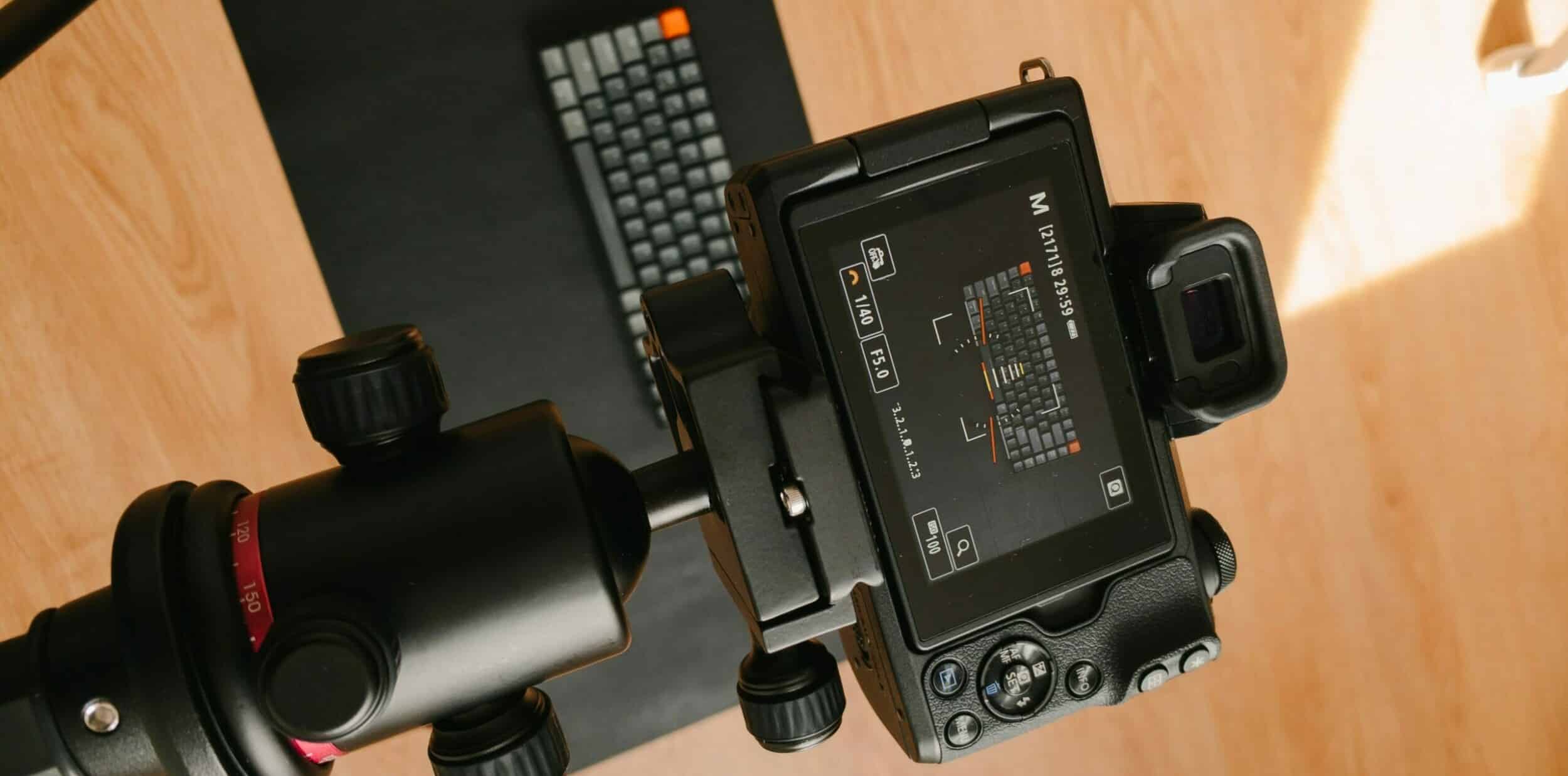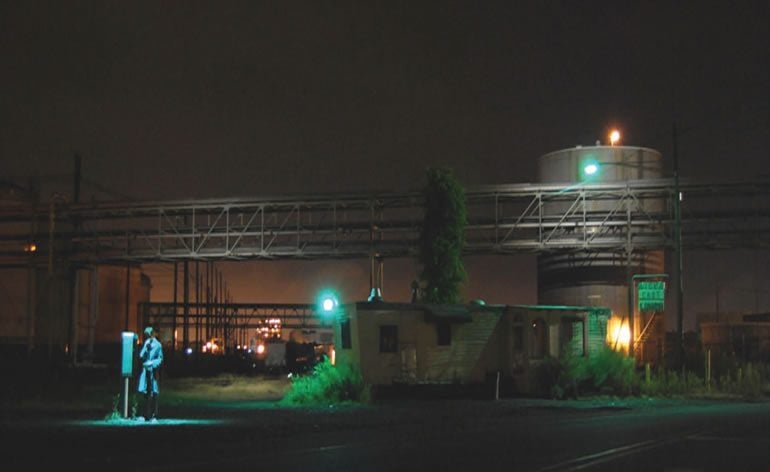Remote collaboration has become an essential part of the modern filmmaking process. With advancements in technology and the increasing need for flexibility in production, filmmakers are exploring new ways to collaborate on projects from a distance. This shift is not only helping to streamline workflows but is also breaking down barriers for filmmakers worldwide.
The Age of Remote Collaboration
In recent years, remote collaboration has emerged as a powerful tool for filmmakers. By leveraging cutting-edge technologies and embracing innovative practices, filmmakers can now work together seamlessly despite being in different geographic locations. This shift has led to a more connected and global filmmaking community, where individuals from diverse backgrounds and cultures can collaborate on projects without physical constraints.
Technology Driving the Change
Several technological advancements have contributed to the rise of remote collaboration in filmmaking.
Cloud-Based Platforms: Revolutionizing Filmmaking Collaboration
Cloud-based platforms have emerged as a game-changer for filmmakers, enabling seamless collaboration and enhanced communication in real-time. These platforms offer a variety of features that not only streamline the feedback process but also facilitate efficient project management. By providing a centralized space for sharing, reviewing, and annotating media files, cloud-based platforms have become an indispensable tool for filmmakers worldwide.
Navigating Top Cloud-Based Collaboration Platforms in Filmmaking
- Frame.io: Frame.io is a video collaboration platform designed for filmmakers, editors, and other creative professionals. It allows users to upload media files, share them with team members, and receive feedback in real-time. With features such as time-stamped comments, annotation tools, and version control, Frame.io enables users to keep track of revisions and have organized discussions around specific parts of the media file. Additionally, Frame.io integrates with popular editing software like Adobe Premiere Pro, Final Cut Pro, and Avid Media Composer, streamlining the workflow between the editing suite and review process.
- Wipster: Wipster is another popular cloud-based platform used by filmmakers to collaborate on video projects. Offering a simple, user-friendly interface, Wipster allows users to upload video files, invite team members to review, and receive time-coded feedback. Wipster also provides analytic tools to help users monitor the progress of their projects and improve communication with their team. Furthermore, Wipster integrates with Adobe Creative Cloud, Slack, and other popular tools to ensure seamless collaboration.
- Kollaborate: Kollaborate, developed by Digital Rebellion, is a cloud-based platform that facilitates collaboration on video projects by offering file sharing, review, and approval tools. With Kollaborate, users can upload media files, create playlists, and generate secure sharing links for clients or team members. The platform also features customizable email notifications, automatic transcoding, and a robust search function, making project management more efficient.
- Miro: Miro is a versatile online collaborative whiteboard platform that can be used by filmmakers for various purposes, such as storyboarding, mind mapping, and project management. Miro allows users to create and share boards, add images, videos, and other media files, and collaborate in real-time with team members. Its intuitive interface and extensive library of templates make it a popular choice for creative brainstorming and planning sessions.
Cloud-based platforms have revolutionized the way filmmakers collaborate on projects by providing real-time communication, efficient project management, and streamlined feedback processes. As technology continues to evolve, these platforms are likely to become even more sophisticated, further enhancing the filmmaking experience and enabling teams to work together seamlessly, regardless of their physical location.
Video Conferencing: Bridging the Gap in Filmmaking Collaboration
Video conferencing has become an indispensable tool for filmmakers, enabling them to maintain clear communication and foster creative collaboration from afar. By providing high-quality audio and video connections, video conferencing tools like Zoom and Google Meet make it possible for filmmakers to hold virtual meetings, script read-throughs, and even conduct rehearsals remotely. This technology has brought new possibilities to the filmmaking process, allowing for increased flexibility and global collaboration.
Identifying Essential Video Conferencing Solutions for Filmmakers
- Zoom: Zoom has become a popular choice for video conferencing among filmmakers and other professionals due to its ease of use and reliable performance. With features such as screen sharing, breakout rooms, and recording capabilities, Zoom is well-suited for virtual meetings, script read-throughs, and remote brainstorming sessions. It also offers virtual backgrounds and touch-up features, allowing users to maintain a professional appearance during video calls.
- Google Meet: Google Meet is another widely-used video conferencing tool that integrates seamlessly with Google Workspace, making it an excellent choice for teams using Google’s suite of productivity apps. With real-time captions, screen sharing, and the ability to join meetings through a web browser or mobile app, Google Meet facilitates smooth collaboration among filmmakers, regardless of their location.
- Microsoft Teams: Microsoft Teams is a comprehensive communication and collaboration platform that offers video conferencing, chat, and file sharing, all integrated with Microsoft 365. Filmmakers who rely on Microsoft’s suite of tools may find Teams an excellent choice for holding virtual meetings and collaborating on projects. Its features include screen sharing, breakout rooms, and customizable backgrounds, ensuring a productive and professional video conferencing experience.
- Cisco Webex: Cisco Webex is a secure video conferencing platform used by businesses and organizations worldwide. Its features include high-definition video and audio, screen sharing, virtual backgrounds, and the ability to record meetings. Filmmakers working on confidential or high-security projects may prefer Webex due to its robust security measures and enterprise-grade performance.
- BlueJeans: BlueJeans is a video conferencing platform that prioritizes simplicity and high-quality audio and video. It offers features such as screen sharing, breakout sessions, and recording capabilities, making it a suitable choice for filmmakers seeking a user-friendly video conferencing solution. BlueJeans also includes Dolby Voice, ensuring clear and natural-sounding audio during calls.
Video conferencing tools have become crucial for filmmakers, enabling them to hold virtual meetings, script read-throughs, and rehearsals remotely. By offering high-quality audio and video connections, these tools help maintain clear communication and foster creative collaboration from a distance. As the filmmaking industry continues to adapt to new technologies, video conferencing will remain a vital component in bridging the gap between geographically separated collaborators, paving the way for more diverse and global storytelling.
Collaborative Editing Software: Revolutionizing Post-Production Workflows
The advent of collaborative editing software has significantly impacted the post-production process in filmmaking. Programs like Adobe Premiere Pro and Avid Media Composer now offer cloud-based, real-time collaboration features, allowing multiple editors to work on the same project simultaneously. This development has streamlined the editing process, reduced the time taken for post-production, and facilitated more efficient collaboration among team members.
Exploring Collaborative Editing Tools for Filmmakers
- Adobe Premiere Pro: Adobe Premiere Pro is a widely used video editing software that offers real-time collaboration features through its integration with Adobe Creative Cloud. By using Adobe Team Projects, editors can work together on a shared project simultaneously, with changes being synced in real-time. This enables a seamless workflow, even when team members are located in different parts of the world. Additionally, Premiere Pro integrates with other Adobe applications like After Effects and Audition, allowing for a comprehensive post-production process.
- Avid Media Composer: Avid Media Composer is a professional video editing software that has long been a staple in the film and television industries. With the introduction of Avid MediaCentral, editors can collaborate in real-time by sharing projects, bins, and media files. Avid’s cloud-based platform allows multiple users to work on the same project, with changes updated and synced across all users’ systems. This real-time collaboration feature improves the efficiency of the editing process and makes it easier for editors to work together, regardless of their location.
- Blackmagic Design DaVinci Resolve: DaVinci Resolve is a powerful video editing, color grading, and visual effects software that also offers collaborative features. With the DaVinci Resolve Studio version, multiple users can work on the same project simultaneously, with changes synced in real-time. The software supports collaboration across different roles, including editors, colorists, and visual effects artists, making it possible for teams to work together efficiently during the post-production process.
- Final Cut Pro X: Apple’s Final Cut Pro X is a popular video editing software that, while not offering real-time collaboration, does provide features that facilitate collaboration among editors. By using XML files and libraries, editors can share projects, media, and edits with other team members, allowing them to work on different aspects of the project independently before merging the changes. While this process is not as seamless as real-time collaboration, it still enables teams to work together on the same project, albeit with some manual management.
Collaborative editing software has transformed the post-production process in filmmaking by enabling real-time collaboration among editors and other post-production professionals. This development has streamlined workflows, improved efficiency, and allowed for a more connected and global filmmaking community. As technology continues to advance, it is likely that collaborative editing software will become even more sophisticated, further enhancing the filmmaking experience and making it easier for teams to work together, regardless of their location.
Virtual Production: Redefining Filmmaking with Cutting-Edge Technology
Virtual production is revolutionizing the filmmaking process by allowing filmmakers to create and manipulate virtual sets and environments. By using virtual production tools like Unreal Engine and Unity, directors, cinematographers, and production designers can collaborate on the visual aspects of a project remotely, resulting in more efficient workflows and increased creative possibilities. This technology has opened up new opportunities for filmmakers to tell stories in innovative ways and has the potential to redefine the future of filmmaking.
A Glimpse into Virtual Production Technologies
- Unreal Engine: Unreal Engine, developed by Epic Games, is a real-time 3D creation platform that has become popular for virtual production in filmmaking. Its powerful rendering capabilities, along with an extensive library of assets and real-time ray tracing, enable filmmakers to create realistic virtual environments and sets. With features like virtual cameras, filmmakers can visualize shots and scenes in real-time, making it easier for directors and cinematographers to collaborate on the visual aspects of a project. Unreal Engine also integrates with motion capture technology, allowing filmmakers to incorporate live performances into virtual environments seamlessly.
- Unity: Unity is another real-time 3D creation platform used by filmmakers for virtual production. Similar to Unreal Engine, Unity offers a range of features that enable filmmakers to create and manipulate virtual environments and sets. Its real-time rendering capabilities, along with its extensive asset library, make it a powerful tool for filmmakers looking to create realistic virtual worlds. Unity also supports a range of third-party plugins and hardware integrations, making it a versatile choice for virtual production.
- Autodesk Maya: Autodesk Maya is a popular 3D animation and modeling software used in the film and television industries. While not specifically designed for real-time virtual production, Maya offers features that can be utilized for previsualization, virtual set design, and animation. By using Maya, filmmakers can create detailed 3D models and environments, which can then be imported into real-time engines like Unreal Engine or Unity for virtual production purposes.
- Disguise: Disguise is a visual production platform that offers tools for creating real-time virtual environments and integrating them with live-action footage. With its focus on live events and immersive experiences, Disguise provides solutions for virtual production workflows, including real-time rendering, motion tracking, and LED screen integrations. This technology enables filmmakers to blend virtual and physical elements seamlessly, resulting in a more immersive and visually engaging production.
Virtual production tools are reshaping the filmmaking landscape by enabling filmmakers to create and manipulate virtual sets and environments, fostering remote collaboration among directors, cinematographers, and production designers. As technology continues to evolve, virtual production is poised to become an even more integral part of the filmmaking process, offering exciting new opportunities for storytelling and creative expression.
Embracing the Benefits of Remote Collaboration in Filmmaking
Remote collaboration offers a multitude of benefits for filmmakers, transforming the way they work together and create their projects. From increased flexibility to cost savings, remote collaboration technologies are opening new opportunities for filmmakers to innovate and expand their creative horizons.
- Increased Flexibility: Remote collaboration enables filmmakers to work together from any location, offering the freedom to create more flexible schedules and accommodate individual needs. This allows for better work-life balance and enables team members to contribute to a project even if they cannot be physically present on set or in the editing room. For example, an editor based in London can work on a film shot in Los Angeles, while a visual effects artist in India can contribute to the same project.
- Cost Savings: Remote collaboration can lead to significant reductions in travel expenses and production costs. By eliminating the need for physical presence, filmmakers can save on costs associated with transportation, accommodation, and on-location expenses. Independent creators and those working with smaller budgets can particularly benefit from these cost savings, making filmmaking more accessible and financially viable. For instance, a small-budget documentary team can collaborate with an international composer, without the need for the composer to travel to the production location.
- Diverse Talent Pool: With the ability to collaborate remotely, filmmakers can now tap into a global talent pool, fostering diversity and creativity in storytelling. Remote collaboration breaks down geographical barriers, allowing filmmakers to work with the best talent from around the world, regardless of their location. This can lead to richer stories and unique perspectives that might not have been possible otherwise. For example, a director in the United States can collaborate with a screenwriter in Australia, bringing together different cultural viewpoints and experiences to create a more compelling narrative.
- Environmentally Friendly: Remote collaboration contributes to a more eco-friendly filmmaking process by reducing the need for physical transportation. With fewer team members needing to travel, the carbon footprint of a film production is significantly reduced. This can be an important consideration for filmmakers who are committed to sustainable practices and reducing their environmental impact. By adopting remote collaboration tools, filmmakers can create a greener production process, while still delivering high-quality content. For instance, a production team can use video conferencing for script read-throughs and pre-production meetings, reducing the need for flights and other transportation methods that contribute to greenhouse gas emissions.
Remote collaboration offers a range of benefits for filmmakers, allowing them to work more flexibly, save on costs, access diverse talent, and minimize their environmental impact. As technology continues to advance and the film industry evolves, remote collaboration is poised to become an even more significant aspect of the filmmaking process, enabling creators to tell compelling stories in new and innovative ways.
The rise of remote collaboration is transforming the filmmaking industry by breaking down geographic barriers and providing new opportunities for diverse voices to be heard. As technology continues to advance, filmmakers will undoubtedly continue to explore innovative ways to collaborate remotely, shaping the future of storytelling and pushing the boundaries of what is possible in film.





